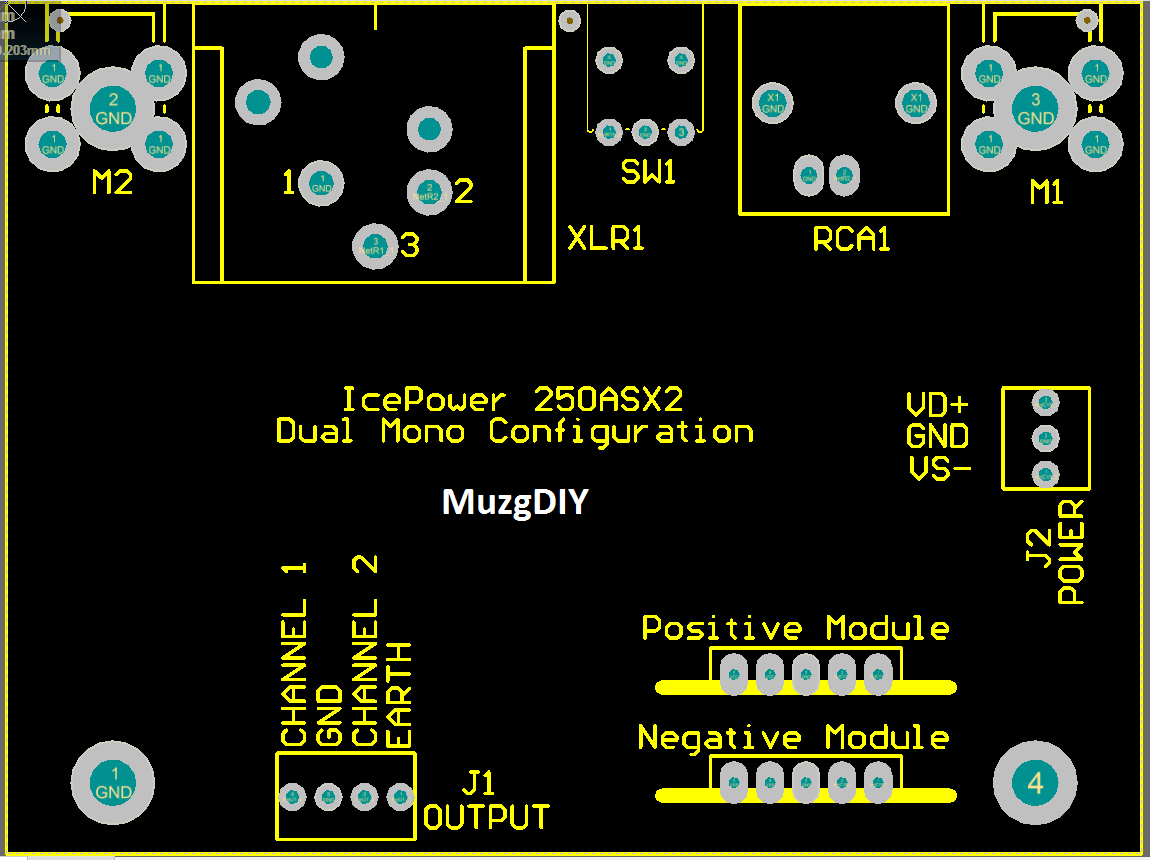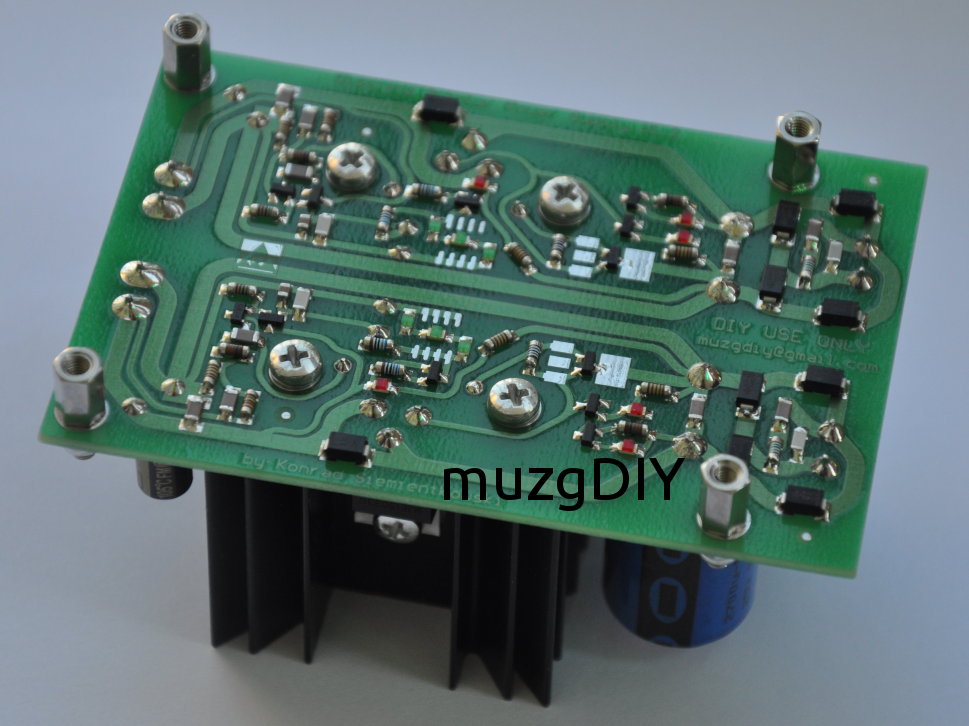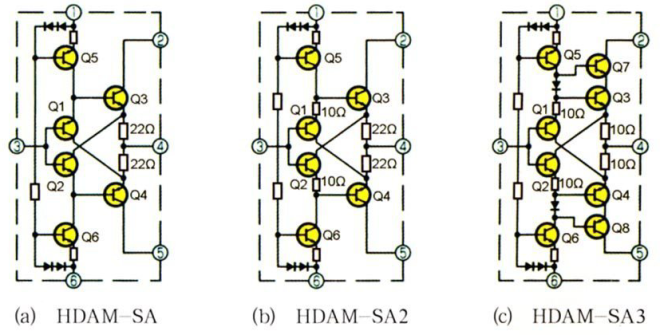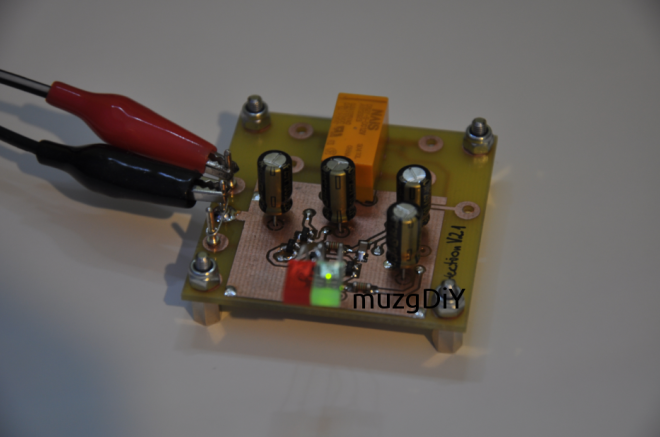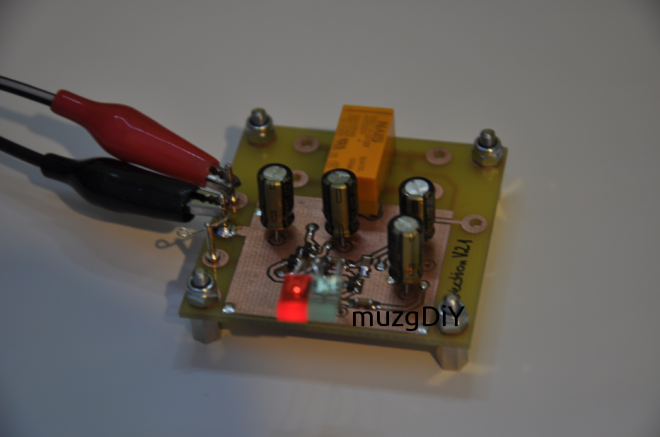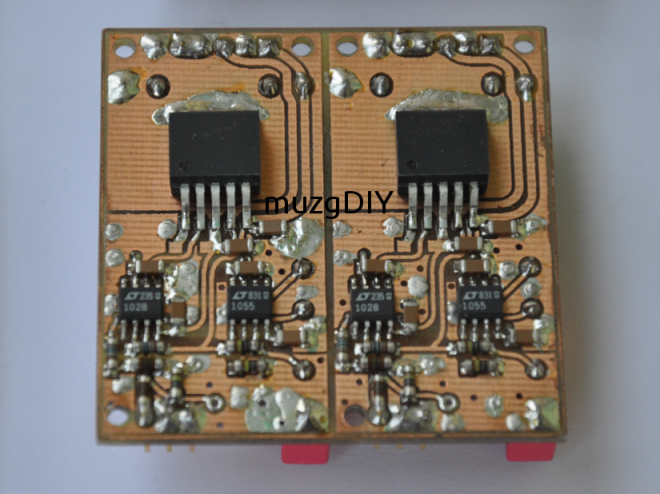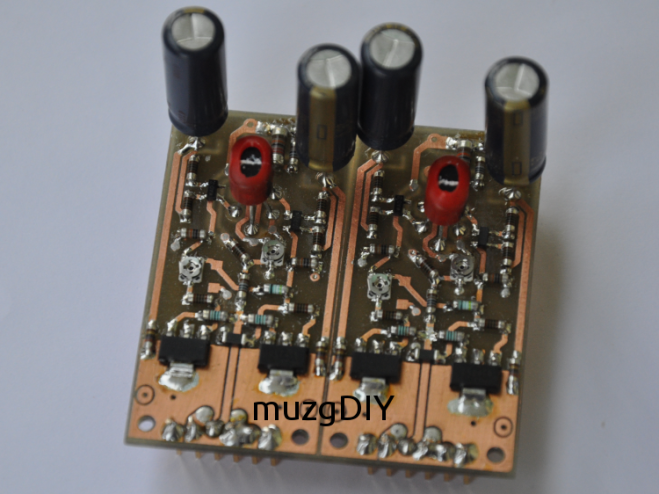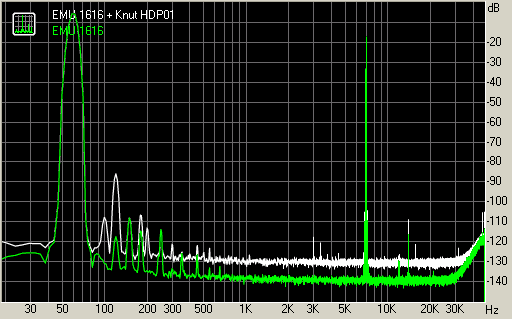After success with my simple input stage in feeding IcePower Amplifiers with signal I decided to design new, complex input stage with XLR/RCA input and differential output.

Module has fully differential architecture with 2 pcs. of single op-amp at the input and differential amplifier OPA1632 at the output. I’m using DIP8 op-amps at the front to allow user to modify sound to its own preferences. Anyway OPA134 is a good choice for class D users (like IcePower) due to its warm Sound generated by FET input circuit.
Switch between XLR and RCA connector is used to choose right input.

Switch located at the centre of the board is used to select the gain which will be applied to the input signal. Differential gain is selectable between -6dB to 6dB in four steps.
Gain: -6dB to 6dB
Imput impedance: 100kΩ
Output impedance: 50Ω
Frequency response (-3dB): 300kHz limited by RC filter
Power supply: +/-12 – 24V (eg. Directly from IcePower module)
Power cunsumption: 100mA with OPA134
Dimensions: 80 x 60 x 35mm
Pinout of the module:
